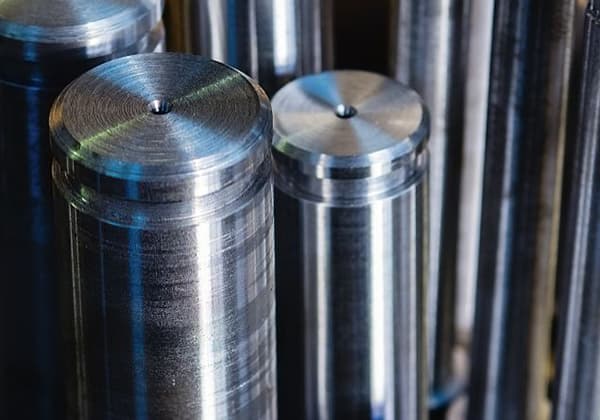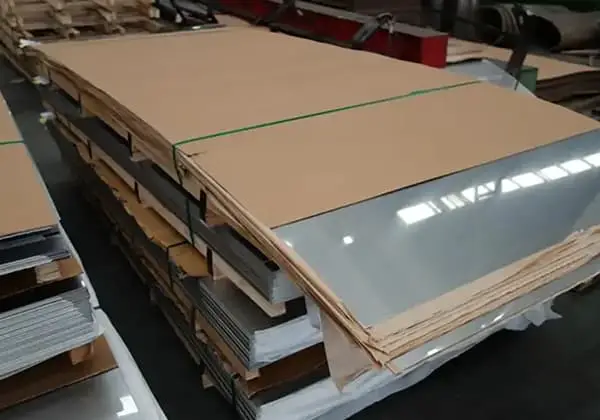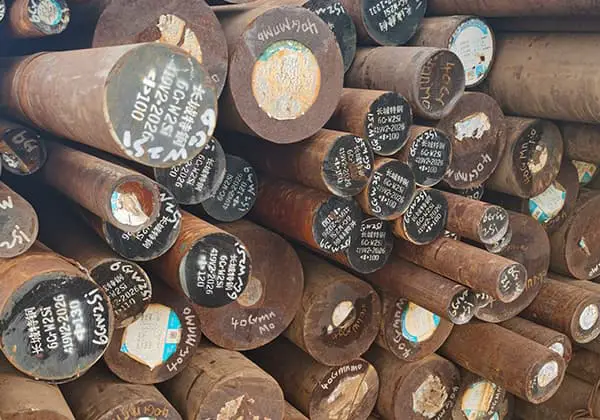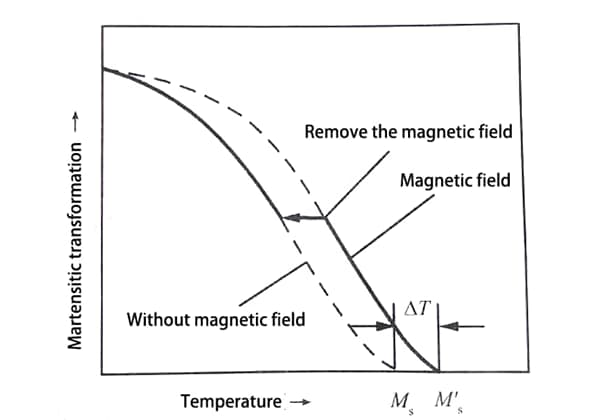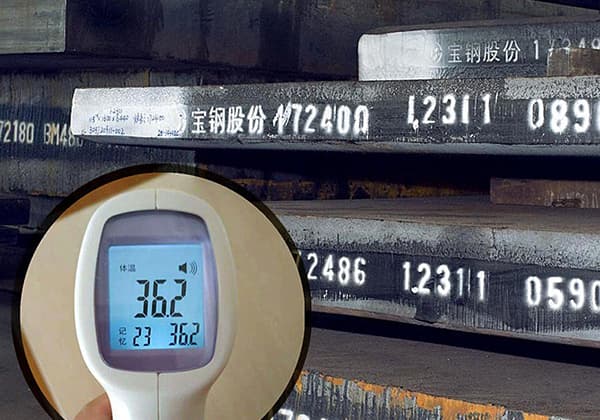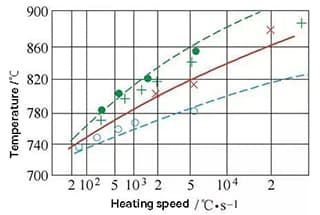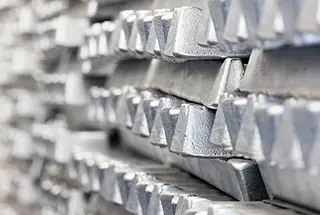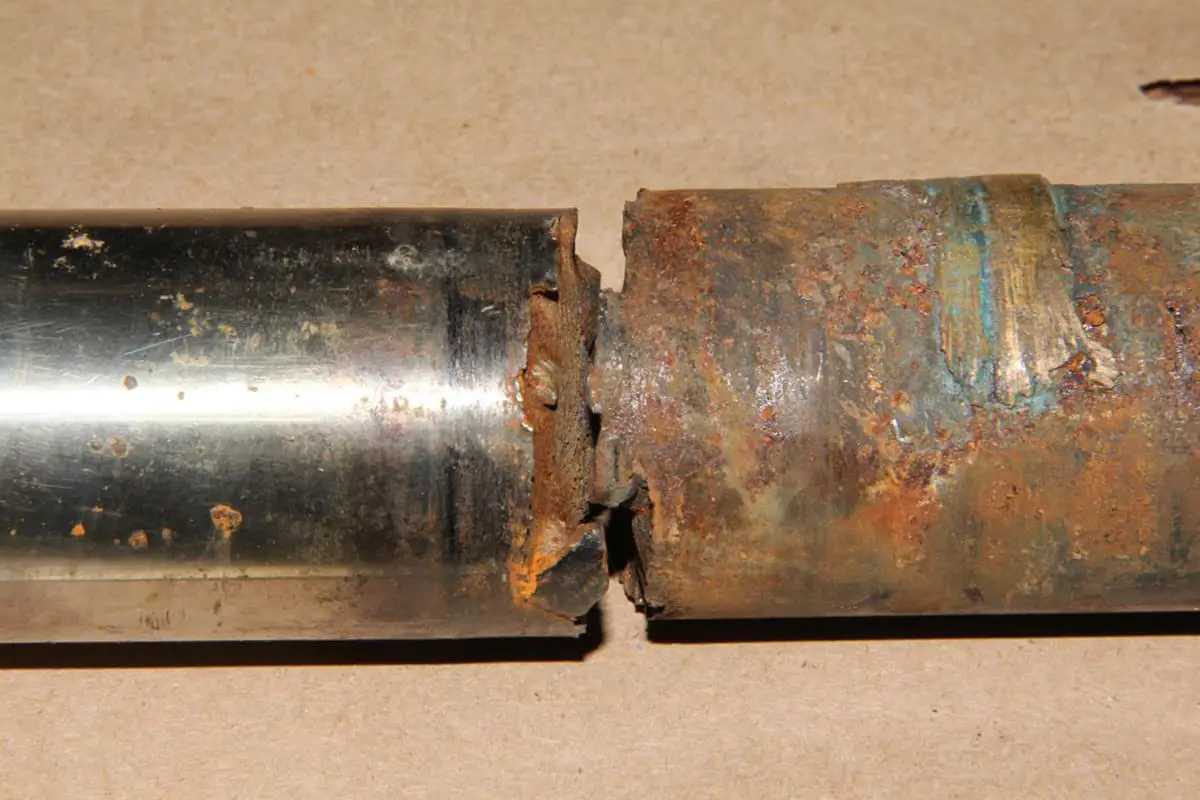
Have you ever wondered how the hidden process of heat treatment transforms ordinary carbon steel into a versatile material for mechanical parts? This blog delves into the fascinating world of heat treatment for #45 and 40Cr steel, revealing how precise heating and cooling processes can significantly enhance their strength, toughness, and wear resistance. By understanding these techniques, you’ll uncover how critical components like gears and shafts achieve their remarkable durability and performance. Prepare to learn the science behind the strength in everyday machinery!
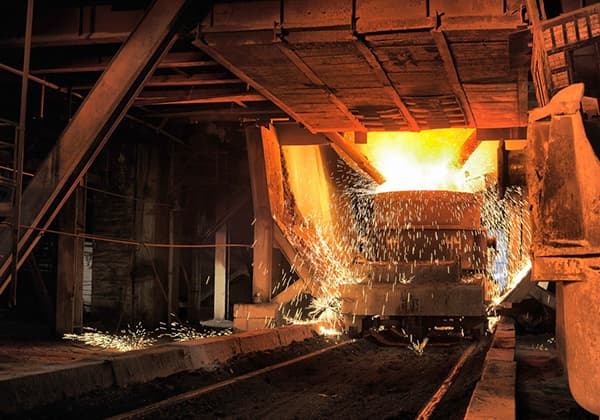
Heat treatment of steel: It refers to the process of heating, heat preservation and cooling solid steel in an appropriate way to obtain the required structure and properties.
Heat treatment can be used not only to strengthen steel and improve the service performance of mechanical parts, but also to improve the technological performance of steel.

The common point is that only the internal organizational structure is changed without changing the surface shape and size.
Heat treatment process can significantly improve the mechanical properties of steel, increase the strength, toughness and service life of parts, and improve hardness and wear resistance.
So important machine parts and tools should be heat treated.
Heat treatment can also improve the processing performance of the workpiece, thus improving productivity and processing quality.
Therefore, heat treatment plays a very important role in the machinery manufacturing industry.
Let’s take #45 steel and 40Cr steel as examples.
High temperature tempering after quenching is called “quenching and tempering” in production. The parts after quenching and tempering have good comprehensive mechanical properties and are widely used in various important structural parts, especially connecting rods, bolts, gears and shafts that work under alternating load.
However, the surface hardness is low and not wear-resistant.
The surface hardness of parts can be improved by quenching and tempering+surface quenching.

#45 steel is called in GB, called S45C in JIS, 1045080M46 in ASTM, and C45 in DIN;
#45 steel is high-quality carbon structural steel, with chemical composition: carbon (C) content of 0.42~0.50%, Si content of 0.17~0.37%, Mn content of 0.50~0.80%, Cr content of<=0.25%.
The cold and hot processing performance is good, the mechanical performance is good, and the price is low, and the source is wide, so it is widely used.
Its biggest weakness is that workpieces with low hardenability, large section size and high requirements should not be used.
The recommended temperature for heat treatment of #45 steel: normalizing at 850℃, quenching at 840℃, tempering at 600℃.
① #45 steel is qualified if its hardness is greater than HRC55 (up to HRC62) after quenching and before tempering.
The highest hardness in practical application is HRC55 (high frequency quenching HRC58).
② The heat treatment process of carburizing and quenching is not adopted for #45 steel.
Quenching and tempering of #45 steel: the quenching temperature of #45 steel is A3+(30~50) ℃. In practical operation, the upper limit is generally taken.
Higher quenching temperature can accelerate the heating speed of the workpiece, reduce surface oxidation and improve work efficiency.
In order to homogenize the austenite of the workpiece, the sufficient holding time is required.
If the actual charging quantity is large, it is necessary to extend the holding time appropriately.
Otherwise, insufficient hardness may occur due to uneven heating.
However, if the holding time is too long, the defects of coarse grain and serious oxidation decarburization will also occur, affecting the quenching quality.
We believe that the heating and holding time should be extended by 1/5 if the charging quantity is greater than that specified in the process document.
Because the hardenability of #45 steel is low, 10% saline solution with high cooling rate should be used.
After the workpiece is cooled into water, it should be quenched, but not cooled through.
If the workpiece is cooled through in salt water, it may cause the workpiece to crack.
This is because when the workpiece is cooled to about 180 ℃, the austenite rapidly transforms into martensite, resulting in excessive structural stress.
Therefore, when the quenched workpiece is rapidly cooled to this temperature range, the slow cooling method should be adopted.
Because the outlet water temperature is difficult to master, it must be operated by experience. When the workpiece in the water stops shaking, the outlet water can be cooled by air (oil cooling is better if possible).
In addition, the workpiece should move rather than be static when entering the water. It should move regularly according to the geometric shape of the workpiece.
The static cooling medium plus the static workpiece will lead to uneven hardness and uneven stress, resulting in large deformation and even cracking of the workpiece.
The hardness of quenched and tempered #45 steel parts should reach HRC56~59, and the possibility of large section is lower, but it cannot be lower than HRC48.
Otherwise, it means that the workpiece has not been fully quenched, and there may be sorbite or even ferrite structure in the structure, which is still retained in the matrix after tempering, and the purpose of quenching and tempering cannot be achieved.
The high-temperature tempering of #45 steel after quenching, the heating temperature is usually 560~600 ℃, and the hardness requirement is HRC22~34.
Because the purpose of tempering is to obtain comprehensive mechanical properties, the hardness range is relatively wide.
However, if the drawing has hardness requirements, the tempering temperature shall be adjusted according to the drawing requirements to ensure the hardness.
For example, some shaft parts require high strength and high hardness;
However, for some gears and shaft parts with keyways, the hardness requirements are lower due to milling and slotting after quenching and tempering.
The tempering heat preservation time depends on the hardness requirements and the size of the workpiece.
We believe that the hardness after tempering depends on the tempering temperature and has little relationship with the tempering time, but it must be penetrated back.
Generally, the tempering heat preservation time of the workpiece is more than one hour.
If #45 steel is used for carburizing, hard and brittle martensite will appear in the core after quenching, and the advantages of carburizing treatment will be lost.
At present, the carbon content of carburized materials is not high, and the core strength can reach very high by 0.30%, which is rare in the application.
0.35% have never seen examples, only introduced in textbooks.
The process of quenching and tempering+high-frequency surface quenching can be adopted, and the wear resistance is slightly worse than that of carburizing.

40Cr belongs to GB3077 “Alloy Structural Steel”.
The carbon content of 40Cr steel is 0.37% ~ 0.44%, which is slightly lower than that of #45 steel. The content of Si and Mn is equivalent, with 0.80% ~ 1.10% Cr.
In the case of hot rolling supply, the 1% Cr basically does not work, and the mechanical properties of the two are roughly the same.
Since the price of 40Cr is about half of that of #45 steel, it is unnecessary for those who can use #45 steel for economic reasons.
Quenching and tempering treatment of 40Cr steel: The main role of Cr in heat treatment is to improve the hardenability of steel.
Due to the improvement of hardenability, the strength, hardness, impact toughness and other mechanical properties of 40Cr after quenching (or tempering) treatment are also significantly higher than those of #45 steel.
However, due to the strong hardenability, the internal stress of 40Cr during quenching is also greater than that of #45 steel.
Under the same conditions, the crack inclination of 40Cr material is also greater than that of #45 steel.
Therefore, in order to avoid cracking of workpieces, oil with low thermal conductivity is mostly used as quenching medium during 40Cr quenching (sometimes double liquid quenching method is also used, commonly known as water quenching and oil cooling), while water with high thermal conductivity is used as quenching medium for 45Cr steel.
Of course, the choice of water and oil is not absolute, and it is also closely related to the shape of the workpiece.
Water quenching can also be used for 40Cr parts with simple shapes, while oil quenching or even salt bath may be used for #45 steel parts with complex shapes.
For quenching and tempering of 40Cr workpiece, various parameters are specified in the process card.
Our experience in actual operation is as follows:
(1) Oil cooling shall be adopted for 40Cr workpieces after quenching.
40Cr steel has good hardenability, can be quenched when cooled in oil, and the deformation and cracking tendency of workpieces are small.
However, in the case of tight oil supply, small enterprises can quench the workpiece with uncomplicated shape in water without cracking, but the operator should strictly control the temperature of the water inlet and outlet based on experience.
(2) The hardness of the 40Cr workpiece is still high after tempering, and the second tempering temperature will increase by 20~50 ℃, otherwise, it is difficult to reduce the hardness.
(3) After tempering at high temperature, 40Cr workpieces with complex shapes are cooled in oil and simply cooled in water to avoid the impact of the second type of temper brittleness.
The workpieces after tempering and rapid cooling shall be subject to stress relief treatment if necessary.
The maximum hardness of medium carbon steel after heat treatment is about HRC55 (HB538), σb is 600~1100MPa.
Therefore, medium carbon steel is the most widely used in various applications with medium strength level.
Besides being used as building material, it is also widely used in manufacturing various mechanical parts.
As long as the medium carbon steel has enough temperature and holding time, it is generally possible to reach this hardness value, and it is impossible if it does not deform.
The first is to have machining allowance, and then use a grinding machine for machining, and the second is to surface quenching.

